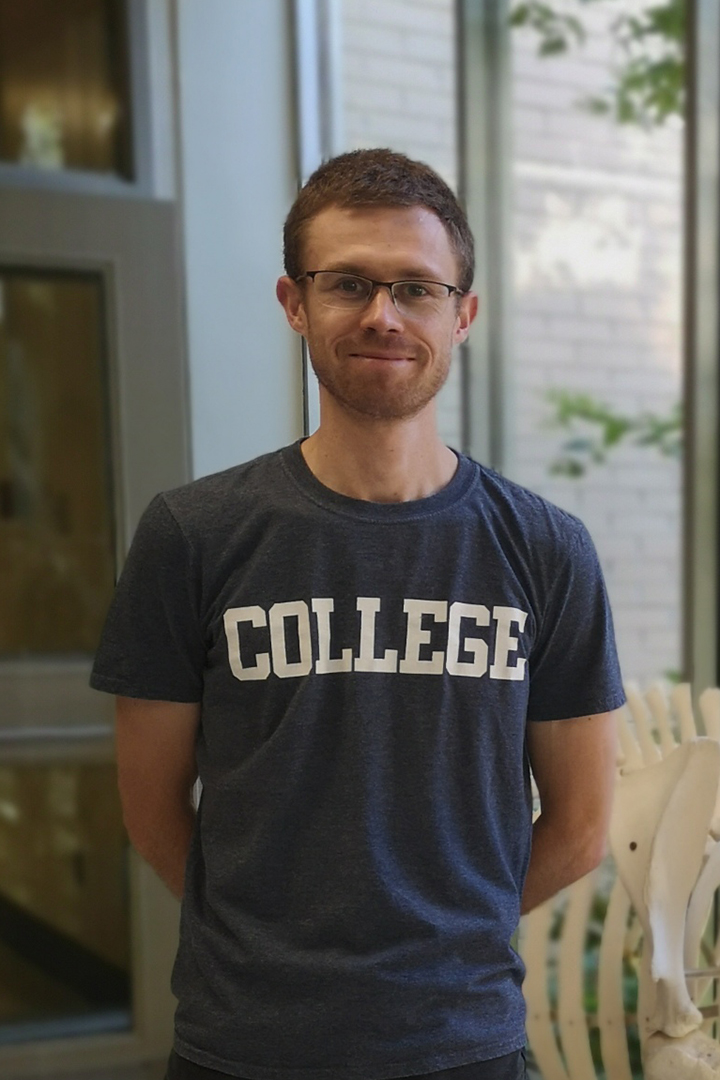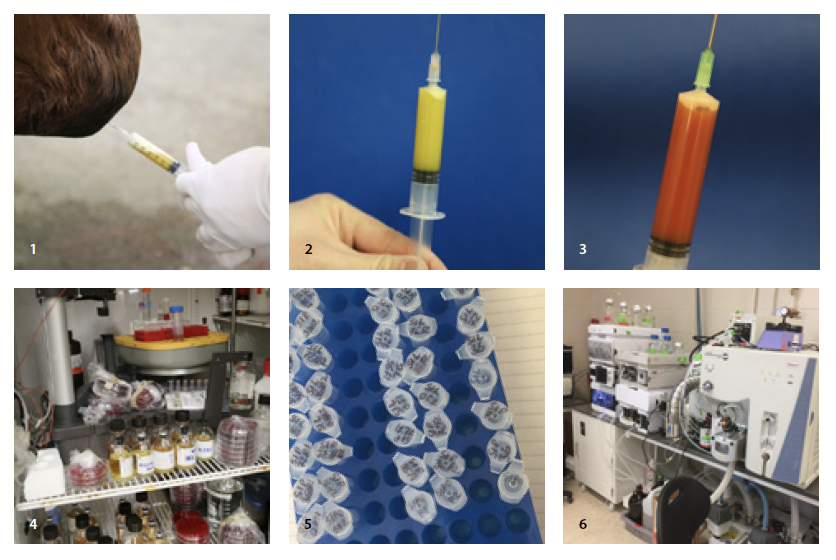
The point of no infection
A team of University of Saskatchewan (USask) researchers from the Western College of Veterinary Medicine (WCVM) and the College of Medicine are striving to find a reliable method for verifying when a horse with septic arthritis no longer has a joint infection — and no longer needs treatment.
By Myrna MacDonald
Who is on the team?
WCVM researchers Dr. Joe Bracamonte and Dr. Elemir Simko (co-principal investigators), Dr. George Katselis (USask College of Medicine) and Roman Koziy, PhD graduate student, WCVM.
What is septic arthritis?
Septic arthritis occurs when bacteria or another infectious agent causes inflammation in a horse’s limb joint. Besides being a very painful condition, septic arthritis is very challenging to diagnose and treat.
Since there’s no reliable standard for determining when the joint infection is resolved, veterinarians often select aggressive treatments. These options include prolonged use of antibiotic drugs and arthroscopic lavage (using an arthroscope to clean out the joint space).
While these treatments can be successful, they can also cause further health issues for patients and aid in the spread of antimicrobial-resistant bacterial strains among horse herds.
What’s needed?
Veterinarians need a sensitive, reliable method that they can use to verify when the infection is resolved in a horse’s infected joint.
What’s being done?
A team of USask scientists are working to find reliable diagnostic markers that veterinarians can use to accurately determine when bacteria in the infected joint is gone.
Their ultimate goal is to expand their research to the clinical setting and develop a diagnostic method that identifies the point of eradication of joint infection in horses.

Project 1
The USask team used standard diagnostic techniques to determine the point when infection was eradicated in horses with septic arthritis in an experimental model. These diagnostic techniques included bacterial culture, cytological evaluation of synovial fluid and bacterial DNA amplification using polymerase chain reaction (PCR). Based on the study’s findings, the infection was eradicated by the fourth day following planned infection in the experimental model.
These results suggest that many clinical cases of septic arthritis are treated with antibiotic drugs longer than necessary and with potential side effects.
Commonly used cytological parameters are not reliable markers for eradication of infection. In fact, some of these parameters may be elevated because of treatment or concurrent disease. Serum amyloid A (SAA) is an acute phase protein useful for diagnosing systemic and joint inflammation. However, the research team confirmed that SAA isn’t a reliable marker for determining eradica-tion of infection in the joint.
Project 2
In this experiment, the USask team analyzed the protein composition of plasma and synovial fluid using mass spectrometry, an analytical tool that accurately measures the mass and electrical charge of different molecules within a sample.
Through this analysis, the team identified five proteins that correlate with the eradication of joint infection — meaning that these proteins may potentially serve as reliable biomarkers.
Project 3
In a previous study, the USask researchers determined that systemic serum amyloid A (SAA) isn’t a reliable marker of eradication of infection in the joint. However, several studies showed that SAA in the joint has a slightly different electrical charge compared to systemic SAA in blood. This finding suggests the existence of joint-specific SAA isoforms — a similar protein but with genetic differences.
In this study, the USask team wanted to characterize joint-specific SAA expressed during infection and try determining if joint-specific SAA could be used as biomarker for eradication of infection. In all seven experimental horses, the researchers found that joint-specific SAA contains a different amino acid sequence compared to systemic SAA in blood plasma.
Researchers may be able to target this specific variant of SAA in synovial fluid and use it as a biomarker for diagnosing septic arthritis, monitoring treatment and confirming eradication of infection.
Project 4
The research team’s next focus is on analyzing the messenger RNA (mRNA) in synovial fluid with transcriptomics, which uses high-throughput methods to analyze the expression of multiple transcripts
in different physiological and disease conditions. Human medicine researchers have successfully used this approach to diagnose systemic infections (sepsis) in human patients.
Specifically, they developed a SeptiCyte test (a panel of four mRNA biomarkers) that accurately differentiate between sepsis and non-infectious inflammatory syndrome in people.
Using a similar approach, the USask team conducted a pilot study using available samples. Next, the researchers are evaluating preliminary data from the pilot study and then expanding it to a full-scale transcriptomic study so they can identify mRNA markers for eradication of infection — similar to how human physicians use the SeptiCyte test for human patients.
The Mark and Pat DuMont Equine Orthopedics Research Fund and the Townsend Equine Health Research Fund have provided financial support for this series of research projects.
Couple 'tops up' fund
In 2020, Mark and Pat DuMont contributed another $100,000 to the equine research fund that they created at the WCVM in 2013.
The Mark and Pat DuMont Equine Orthopedics Research Fund supports WCVM-based research targeting musculoskeletal health — a passion for the couple who own sport horses on their farm near Langley, B.C.
In the past eight years, the B.C. couple has committed $700,000 to the WCVM research fund. Besides this latest gift, the DuMonts gave an initial gift of $300,000 in 2013 and then topped up the fund with another $300,000 gift in 2016.
Their latest donation is supporting the next phase in a large-scale, multi-year septic arthritis research project led by equine surgical specialist Dr. Joe Bracamonte and veterinary pathologist Dr. Elemir Simko of the WCVM.
The team’s ultimate goal is to develop a diagnostic tool that veterinarians can use in their practices to enhance their treatment of equine patients diagnosed with septic arthritis.
So far, the WCVM research team has published two articles in the Canadian Journal of Veterinary Research in 2019 and 2020 with plans for further publication.
